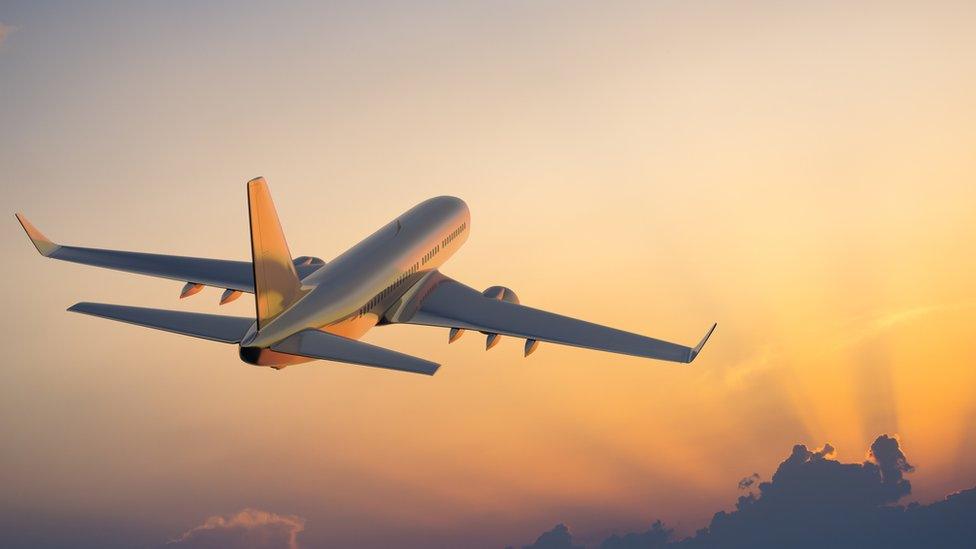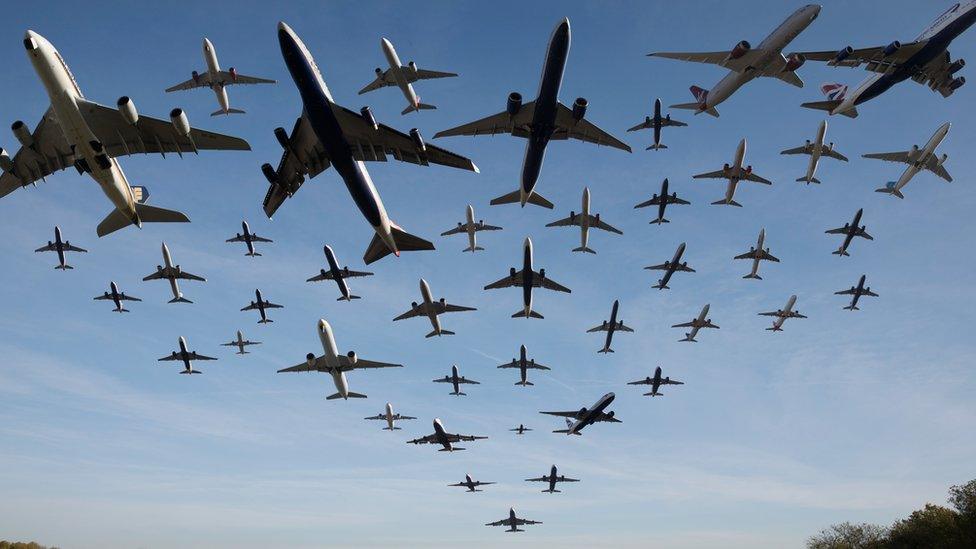Climate change: Faster flights, bumpier rides
- Published
- comments
Climate change making Atlantic flights quicker but bumpier
Flights between the US and UK could become quicker in the future as a result of global warming.
The negative link between frequent flying and climate change is often talked about, it's estimated that flying contributes around 2% of the world's global carbon emissions.
But one of the unintentional consequences of a changing climate could also see faster flight times, with passengers experiencing bumpier rides.
This week a commercial aircraft going from New York to Lisbon in Portugal reached a ground speed of 835mph (1,344km/h), that's faster than the speed of sound and 250mph more than the flight's typical top speed.
It's all thanks to something called the jet stream.
What is the jet stream?
Jet streams are narrow currents of very strong winds that travel around the planet high up in the atmosphere.
As the Earth rotates, the jet streams move from west to east around the globe.
On average, jet streams travel at a speed of about 110mph, but in the winter when the temperature between warm and cold air is more dramatic, jet streams can reach speeds faster than 250mph.

Aeroplane companies traveling from the Unites States to the UK or Europe will deliberately piggyback on jet streams that flows over the Atlantic ocean to shorten travel times, pick up speed and save fuel, cutting several minutes off journeys.
A journey from London to New York typically takes seven hours, 45 minutes, but the return journey traveling along the jet stream flowing from west to east takes abut an hour less.
The jet stream could be quicker with climate change
Professor Paul Williams a weather expert at the University of Reading says "the strongest jet stream winds are projected to speed up by about 2% for every one degree Celsius of global warming.
"Of course we've already had over one degree of global warming, so there's a bit of evidence that the jet stream has already started to speed up."

But while travellers journeying from the United States to Europe may feel positive about shorter flights, Prof Williams says it's not all good news for passengers.
"The projections are for a further increase, maybe a doubling or trebling of the amount of severe turbulence in large parts of the jet stream by, for example, the 2060s."
Turbulence is rarely dangerous for planes and passengers and is caused by unstable air movement, changes in wind speed and direction and can mean a plane bounces around a bit in the air.
So while flights between the US and UK might be shorter, they'll almost certainly be bumpier too.
- Published16 January 2020

